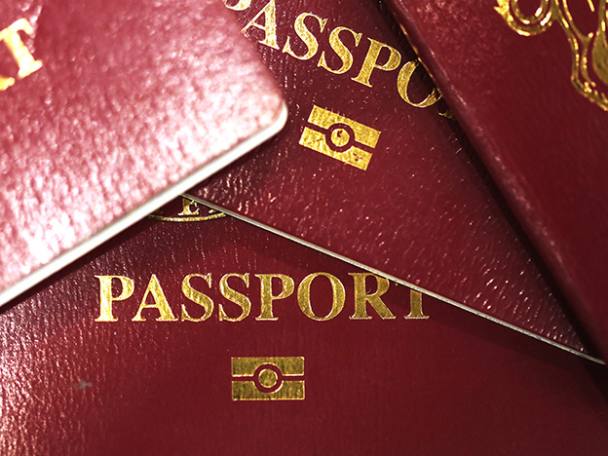For a business that relies on innovation to stay ahead, De La Rue (DLAR) has been surprisingly slow-moving. Despite a professed desire to become a more technology-led security product and services provider, the group seems unable to escape the predominance of its 200-year banknote printing heritage. With a self-confessed challenging period ahead, immediate action is being taken to ensure the group is fit for future purpose. But this epiphany may have come too late.
Authentication growth potential
Non-core disposals
Continued reliance on currency
Profit warning
High levels of debt
Management upheaval
Almost 80 per cent of revenue and 60 per cent of profit is derived from the currency division – banknote printing and the associated security features and polymer materials. While the existential threat of the ‘cashless society’ may have been overstated, De La Rue remains stubbornly defiant over the long-term role of cash. According to a report by UK Finance, the volume of cash payments in the UK has been declining for the past decade and was overtaken by debit card usage in 2017. With the gap projected to continue widening, cash payments will fall to just 9 per cent of all UK payments by 2028. Taking the UK as a microcosm, cash payments will persist, but be much less prevalent.
Aided by higher volumes, revenue in the currency division (excluding the divested paper business) did rise by 16 per cent to £399m in 2019. But this translated to just a 3 per cent increase in adjusted operating profit to £42m. Due to more complex, lower-margin jobs and competitive pressures, the adjusted operating margin narrowed by 1.4 percentage points to 10.4 per cent. Demand remains unpredictable with irregular client buying patterns and fluctuating overspill from state print works. At the year-end, the 12-month order book had shrunk by over a quarter to £202m. With banknote demand set to weaken and competition to ramp up, further pricing and margin headwinds are expected, triggering a warning of overall flat revenue and “somewhat lower” operating profit in 2020.
The group is hoping to offset slower-growing volatile banknote printing with momentum in ‘product authentication and traceability’ (PA&T). The increase in counterfeit goods and illicit trade is driving demand for brand protection and product traceability from both the government and commercial sectors. New business wins include a five-year contract with HMRC to implement a track-and-trace system for tobacco products sold in the UK. The aim is to double the PA&T division’s revenue within three years, management intends a restructured authentication division to contribute the majority of group profit within the next five years. This may sound promising, however although the order book is up, PA&T revenue increased by only 2 per cent last year, while adjusted operating profit plunged by 39 per cent owing to upfront operating expenses and the migration of manufacturing to Malta. Four years into a five-year transformation plan, a balanced business portfolio remains elusive – currency accounts for 57 per cent of group profit.
De La Rue is now infamous for its loss of the UK’s post-Brexit passport contract. With wounded prestige accompanying a £3.7m write-off of bid costs in the 12 months to 30 March 2018, the impact of the failed tender will become clearer once the current contract concludes later this year. Facing a consolidating market and lower volumes in 2019, the group announced the sale of its international identity solutions business to HID Global last month for £42m, seeking to focus on identity-related security features instead. This follows the £58m disposal of its paper business in 2018. In forfeiting medium-term growth potential, JP Morgan Cazenove has trimmed 9 per cent from its adjusted operating profit forecast for 2021 following the latest sale.
Disposals will help to counter weak cash generation. Net debt more than doubled to £108m last year while cash from operations swung from a £74 inflow to a £4.6m outflow. Contributing to this was a £67m hit from increased receivables (amounts owed to the group) and an associated £18.1m credit loss on amounts owed by the Venezuelan central bank. A pension deficit of £77m is another major balance sheet and cash flow issue. Total pension liabilities of a whopping £1.1bn and the £20.5m top-up payment made last year is scheduled to increase by 4 per cent a year before plateauing at £23m between 2023 and 2028.
The boardroom casualties continue. Under pressure from activist investor Crystal Amber Fund (which holds a 6.25 per cent stake), the retirement of chairman Philip Rogerson follows chief executive Martin Sutherland announcing his departure alongside full-year results in May.
| De La Rue (DLAR) | |||||
| ORD PRICE: | 298p | MARKET VALUE: | £309m | ||
| TOUCH: | 298-299p | 12-MONTH HIGH: | 553p | LOW: | 282p |
| FORWARD DIVIDEND YIELD: | 8.4% | FORWARD PE RATIO: | 8 | ||
| NET ASSET VALUE: | * | NET DEBT: | £108m | ||
| Year to 30 Mar | Turnover (£m) | Pre-tax profit (£m)** | Earnings per share (p)** | Dividend per share (p) | |
| 2017 | 462 | 59.0 | 46.4 | 25.0 | |
| 2018 | 494 | 53.0 | 42.5 | 25.0 | |
| 2019 | 565 | 53.0 | 42.7 | 25.0 | |
| 2020** | 568 | 46.0 | 36.8 | 25.0 | |
| 2021** | 448 | 44.0 | 34.7 | 25.0 | |
| % change | -21 | -4 | -2 | - | |
| Normal market size: | 3,000 | ||||
| Beta: | 1.21 | ||||
| *Negative shareholder equity | |||||
| **JP Morgan Cazenove forecasts, adjusted EPS and PTP figures | |||||











